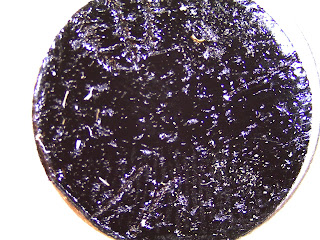The information we gathered during this experiment is that pollen size does in fact correspond with the size of the flower itself suporting our hypothesis. Gypsophila being the smallest of the flowers we observed had a measurement of 38.3 um in width. Delphiniumn the next flower we observed had a measurement of 45.1um. Alstroemeria the final flower we took notes on had a width of 81.5um. Given this information it would not be safe to say that this is true for all flowers, more experimenting would be needed
Pollen Grain vs Plant Size
Monday, January 13, 2014
Analysis of Phylogenetic Trees
Our phylogenetic trees did not agree. We based our pollen tree off of the shape, Delphinium and Alstroemeria looked similar to a football, Gypsophila did not, and based on the pollen type, Delphinium and Alstroemeria were both plates. Gypsophila was not. The surface textures of our pollens were not comparable. The only evidence that Gypsophila and Alstroemeria were more closely related was the number of apertures each of them had. Alstroemeria and Gypsophila each had one and Delphinium had three. Perhaps when it comes to looking at the evolution of plants the number of apertures is a better display of relation.
This was shocking because the Gypsophila and Alstroemeria were the most different in size as well. The protein sequence is most likely more accurate considering our group was basing our relationships strictly on the appearance of the pollen. Our pollen grains were so diverse, there was not much else to base it on, so the protein sequence is a more reliable estimation of our plants evolution.
This was shocking because the Gypsophila and Alstroemeria were the most different in size as well. The protein sequence is most likely more accurate considering our group was basing our relationships strictly on the appearance of the pollen. Our pollen grains were so diverse, there was not much else to base it on, so the protein sequence is a more reliable estimation of our plants evolution.
Wednesday, January 8, 2014
Protein-sequence-based phylogeny
According to this phylogeny tree Alstroemeria and Gypsophila are more closely related than Delphinium.
Note: Gyspophila, Alstroemeria, and Delphinium were our general plant groups, but tricorne and repen, are more specific versions, that we did not use in our experiement. These sub catagories were the closest to the specific flowers we actually used available to us on the polygenetic tree maker.
Friday, December 20, 2013
Pollen Data Spreadsheet
This is a data table of information we collected on our pollen samples after sing the sem microscope. The sem gave us the ability to take a closer look at the number of apertures and surface texture of the pollen grains.
https://docs.google.com/spreadsheet/pub?key=0AoX295BKwdhrdDlpNHBJc05DMmdQZzNlNkxKQ3EzakE&output=html
https://docs.google.com/spreadsheet/pub?key=0AoX295BKwdhrdDlpNHBJc05DMmdQZzNlNkxKQ3EzakE&output=html
SEM data
This post is a collection of images we collected from the sem microscope.
Alstroemeria:
This is an image of an alstroemeria pollen grain at 2000x. It is 81.5um in width.
Alstroemeria:
This is an image of an alstroemeria pollen grain at 2000x. It is 81.5um in width.
In the photo above you can see the up close texture of the Alstroemeria pollen at 7250x
Gypsophila:
Here is the gypsophila pollen grain at 2000x. It is 38.3um in width.
Here it is again at 5000x
Delphinium:
Here is the delphinium pollen grain at 2000x. It is 45.1um in width.
Here is the pollen grain at 6950x, you can see the dotted texture.
Procedure
Lab Procedure
To prove our hypothesis we devised a way to compare the samples of flowers with their respective pollen size.
Our first step was finding 3 flowers of varying sizes. Our choices were Alstroemeria aurea, Gypsophila paniculata, and Delphinium parishii. These choices allowed for us to compare pollen over a range of different flower sizes.

Alstroemeria aurea

Gypsophila paniculata

Delphinium parishii

Alstroemeria aurea

Gypsophila paniculata

Delphinium parishii
Under a stereomicroscope we dissected both the Delphinium parishii and the Alstroemeria aurea. We then put the pollen on a stub which was separated by fiduciary marks into 3 sections. The Gypsophila paniculata was too small to dissect so we instead pressed the anthers on to the carbon tape which transported pollen from the flower to the stub.
After the stub was prepared, we photographed it as well as our flowers under the Leica microscope at 35x magnification.
Between 2 & 3: Gypsophila
Between 3 & 1: Delphinium
Between 1 & 2: Alstroemeria
When preparing for the SEM we followed the standard procedure for safely putting our stub inside. Once the stub had been displayed on the screen we found individual pollen grains for each of our samples. At this point we photographed each grain and measured their widths. We then zoomed in to see the surface texture on each pollen grain.
Once this was done we had enough data to prove or disprove our hypothesis. When comparing the widths of the pollen grains to the widths of the flowers, we discovered that in our sample of Alstroemeria aurea, Gypsophila paniculata, and Delphinium parishii the pollen grain size was proportionate to the size of the flower.
Above is our stub photographed at 35x on the Leica microscope.
Between 2 & 3: Gypsophila
Between 3 & 1: Delphinium
Between 1 & 2: Alstroemeria
When preparing for the SEM we followed the standard procedure for safely putting our stub inside. Once the stub had been displayed on the screen we found individual pollen grains for each of our samples. At this point we photographed each grain and measured their widths. We then zoomed in to see the surface texture on each pollen grain.
Once this was done we had enough data to prove or disprove our hypothesis. When comparing the widths of the pollen grains to the widths of the flowers, we discovered that in our sample of Alstroemeria aurea, Gypsophila paniculata, and Delphinium parishii the pollen grain size was proportionate to the size of the flower.
Subscribe to:
Posts (Atom)








